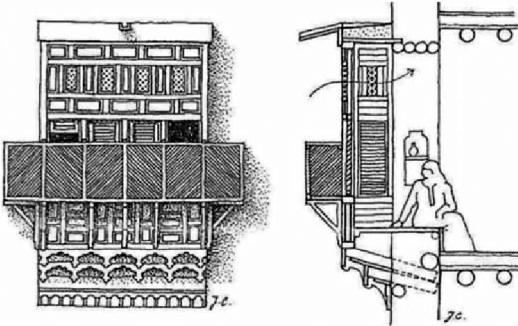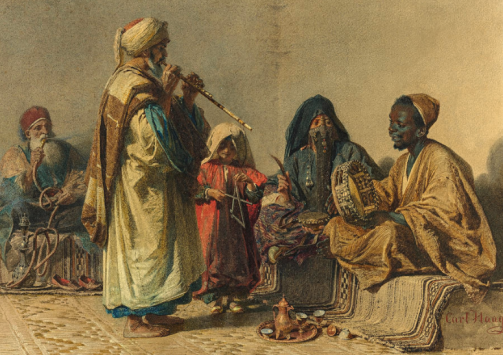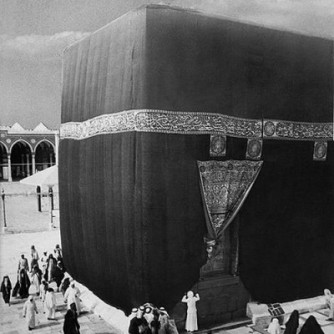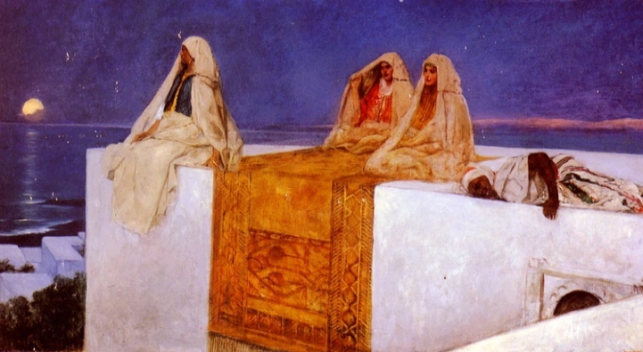OK so, it’s taken me a real long time to post this for a couple of reasons. The main reason being that I wanted to make sure that it worked. To give a brief outline, I got an email from someone I didn’t know explaining that she had this year-long uncontrollable love for a guy and wanted my advice to make her feelings go away (tall order, no?) In her case, she was a Muslim, in love with a non-Muslim, BUT faith really isn’t an issue here. The advice I gave (though at times directed specifically to her circumstances) is for ANYONE. It doesn’t matter if you’re Muslim/atheist/spiritualist, whatever, nor does it matter what the other person is; the advice is psychological, and concerns thinking patterns. If you’re human, it should work (love-struck dog groans and turns away from computer screen). So fellas can use this too – if a guy had emailed me, the advice would have been the same.
I just have one major thing to mention before we go into the emails. If you are someone who has an uncontrollable love or obsession for someone and no longer want this feeling, in order for the advice here to be effective, you need to WANT to get better and you need to want it BAD. If you’re just reading this out of interest, pass it on to someone else who is sick to their stomach from their ordeal. The girl who messaged me clearly wanted it bad (heck she emailed a stranger). And that’s a major reason why this worked for her. I do have her permission, and have obviously censored the email for the sake of anonymity. Where my advice is specific to her circumstances, just substitute them with your own.
Email from young woman:
“Salaam aleikum,
I have read your tweets and your columns.
I have the following matter.
I have been struggling for a while with this.
I’m a young woman who lives in X. I’m in love with a non-Muslim man and I don’t want to pursue with this because I know its haram. He actually doesn’t have a faith but he is into spiritualism like sufis.
I pray everyday to Allah to release me from this passion and feelings for him but they wont go away. I’ve tried not to contact him but my heart ends up bluffing and I call or text him.
He lives in X so I don’t see him that often. But I love him when I don’t want to, because I know in my life I can never have the halal life I want for myself and my family. As a practicing Muslim that’s my problem but my heart doesn’t want to acknowledge this.
This has been going on for a year and I don’t know who to tell this because I don’t want my surroundings to know…
If you could share some advice I would be grateful.”
Philo_Human REPLY:
“Salam X,
I want you to take these words seriously because I know about these situations and have had plenty of experience. What I will say might sound harsh, but I sympathize with you a lot.
In the same way the body falls sick, the heart and mind can become sick too. You have a disease of the heart. Make no mistake about this. It is a habitualized feeling that you have constructed in your head. There is nothing “special” about this individual or your relationship to him. You may suffer from some kind of addiction to him, and it is like any other addiction – be it to sugar, or alcohol, or sex, or whatever. Know this. It could have been anyone. That it IS him is purely due to the specific circumstances that have led you to this outcome: right place, right time, right background, right words, and hey presto – you’re in “love”. But you’re not in love in any positive way because clearly this situation is bringing you great difficulty.
Know this: You create further “love” in your heart the more you invest in him. By “investing” I mean putting time, effort or money into him. This includes sending him a text, calling, checking his online profile (if he has one) etc. By doing these things, you FUEL the attachment, and will never get over it. You must cut off contact entirely – not even a glance to a photograph of him.
You need to make sure other things in your life are in order: Your health (eating well and exercising), your other relationships (family and friends), your job, your goals and ambitions (what are you trying to achieve in life; who do you want to be?). Often people aren’t able to move on from the past because they don’t have a great enough future to aspire towards. I obviously don’t know your situation, but this is all very important.
Most crucially, you need to RE-CONDITION your mind to change what he means to you. This is what it’s all about. You have falsely associated certain positive meanings to him: “happiness” “love” “completion” whatever, you need to radically change this. I want you to write down a list of new associations to him: “He’s bad for my faith”, “He takes me away from God”, “He will destroy my state in the akhira”, “He compromises my job ambitions”, “He makes my life miserable”, “He wastes my time and energy” “He brings out the worst in me” etc. Add your own, make them general and specific – make them emotional; and make them MEANINGFUL TO YOU. Feel the effects, contemplate on each one. I want you to do this EVERYDAY. Preferably before you sleep and when you wake up, as the defenses to the subconscious are weakest at these points.
In addition, I want you to remove the assumptions you have about him, as you are currently filled with them and they are a huge cause of your distress. You may have hoped that he will somehow come round, embrace Islam and marry you. Or you might think that he’s truly perfect for you. These are all likely fantasies and have no basis in reality. I want you now to make a list of questions that undermine and destroy these assumptions. Make them in the form of QUESTIONS. So for example, ask yourself something like: “Will he get married to someone before I get married, or after I get married?” (here the assumption is that you will both marry other people) or “Why waste precious time, energy and thought on someone you don’t ever want to see or hear from again?” or “How grateful will I be when God blesses me with someone who I am so much happier with?” (the assumption here again is that you are not going to be with him). It’s all about undercutting your assumptions. Make some more up of your own and ADD THESE to the list of associations I mention in the previous paragraph. Ask yourself these questions EVERYDAY. Make sure you FEEL the effects of asking these questions, because the subconscious is shifted more strongly when there is an emotional charge to it.
Try not to talk about being depressed over him to friends or family as this is also a form of investment and will fuel the attachment. If you must talk about it, make sure it’s from a position that empowers you.
In general, pray to Allah and repent. Repent until you feel like crying for all faults major and minor, hidden and open. Do this EVERYDAY or as often as you can. Know that He loves you and will not put you through anything without it strengthening you in some way. In-sha’Allah, you will be able to help someone with the same difficulty in the future, as it is a common problem among people.”
Now thankfully, she did as I said and emails that followed were very positive on her part. I won’t paste them all in full here because I want the focus to be on the method, but let’s just say it worked better than I imagined. Within a few days she was seeing dramatic changes, and by two weeks she displayed a huge turn around. Here is a part of one of her later emails (2 weeks later):
“I’m in a state now I’ve never experienced before. I’m enjoying my life again, I have a wonderful time with my family and most of all I’ve found peace in my mind and connected stronger with my Faith!
I’m no longer desperate in this kind of love. He’s been trying to reach out to me different times but I can handle it very well. He called me once because it was his bday. I clearly showed no interest and I told him that I have no intention in going further in such kind of relationship. He asked to skype etc but I refused. I said goodbye and that was it. I cried after but those were these of closure and joy at one side.
I can truthfully say to myself that I can look back at his pictures/memories without feeling any emotions (love kind)…
There are times where I have a moment because something I see or hear makes me remind of him. But then I just laugh it away and think, I was blind to not see the signs but hamdellah on the other way it brought me closer to my truth and to Allah and my family.”
But girls and guys, before you start sorting your lives out, I just want to add a few points:
When you do this just like I said, you may start feeling better to the extent that you feel you don’t need to carry on doing the daily re-conditioning. This is a mistake. You must keep going. The mind is like a rubber band; if you stop pulling it in one direction, it will slowly relapse back into its old thinking patterns. You need to create a new default. The girl had emailed me a few weeks later saying she had had some set backs due to “some brief encounters with him”. When I spoke with her much later (when everything was good again), I asked her if she had stopped doing what I told her during that time and she said yes. So do not stop. Feel great, but just keep doing it. Do it for months if you have to. And later you can start doing it less. I can’t stress this enough. Do not think, “OK I’m fine now, enough conditioning,” especially not for the first few weeks.
This leads me on to another point, which is that you should feel free to change and add to the list of new associations or questions according to how you feel. In the course of reframing the way you think about this individual, you might realize more reasons why this person isn’t good for you, or why you need to stop thinking about them. Add them to the list. Or, a new negative thought might arise which means you need to ask yourself a new question to undercut and uproot it. The mind can be nasty like that – you get over one negative thought and then it’s like, “oh yeah…? well, remember THIS!!” And you’re like “Noooooo!! I just remembered some sentimental detail which has made me mushy again!!” (or whatever).
And this leads me to a final point, which is: expect triggers to spark off emotional reactions now and then. Don’t worry, they’re totally natural and not a set back. They’re just associations. It could happen when you see the road he or she lives on, a park bench you sat on together, a gift they gave you, etc. This is normal, and eventually these strong emotional associations will fade away the more you just keep doing everything I mention in the email. And don’t skimp on the healthy eating and exercise – that’s all important too! (trust me, everything in that email is thought out with rifle-scope precision).
Please bear in mind guys, I’m not an agony aunt. I might even take this down later because this isn’t really my “field”. I just want to give you the tools to help yourself. I’ve now given you more than I gave to the young woman who got better just from that email. If you do everything there, you should notice big changes. Feel free to comment but pardon me if I can’t be so responsive because I will not have a life if I addressed everyone’s relationship issues individually. But it would be nice to hear how you are doing.
I really wish you all the best and am genuinely excited, because I know you can be happy again.
Peace be with you.
And with Allah is all success.




